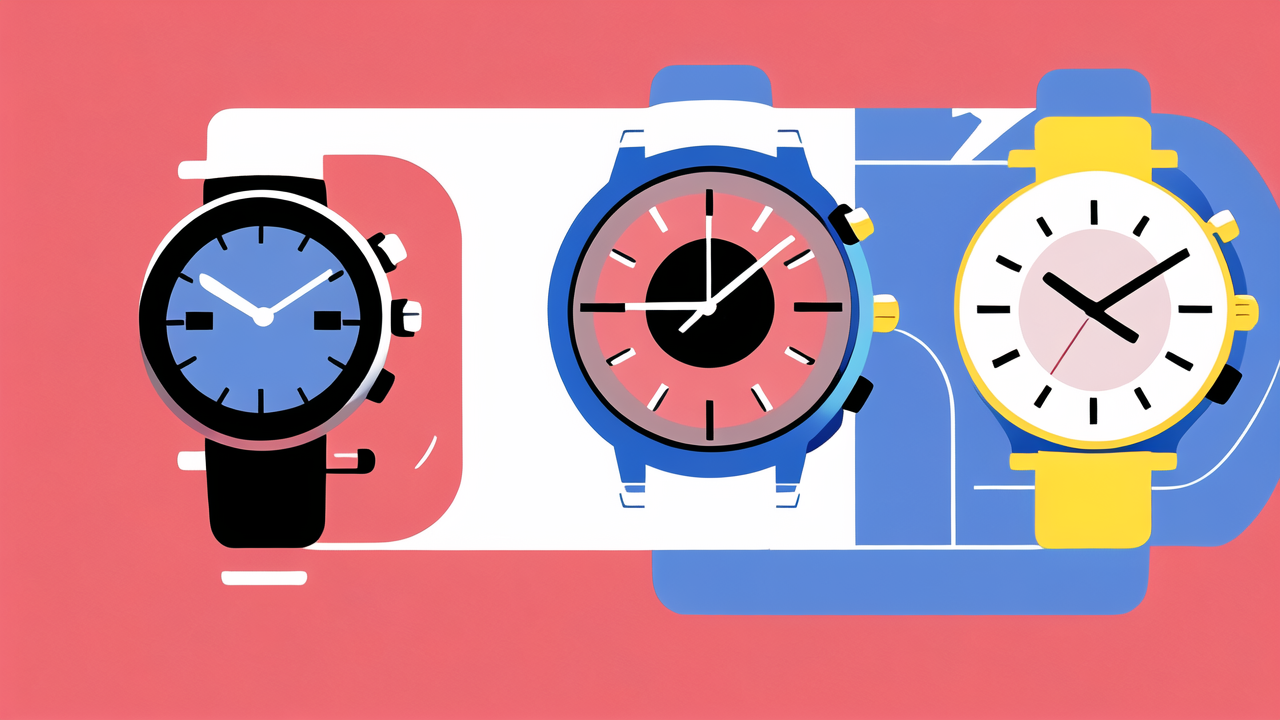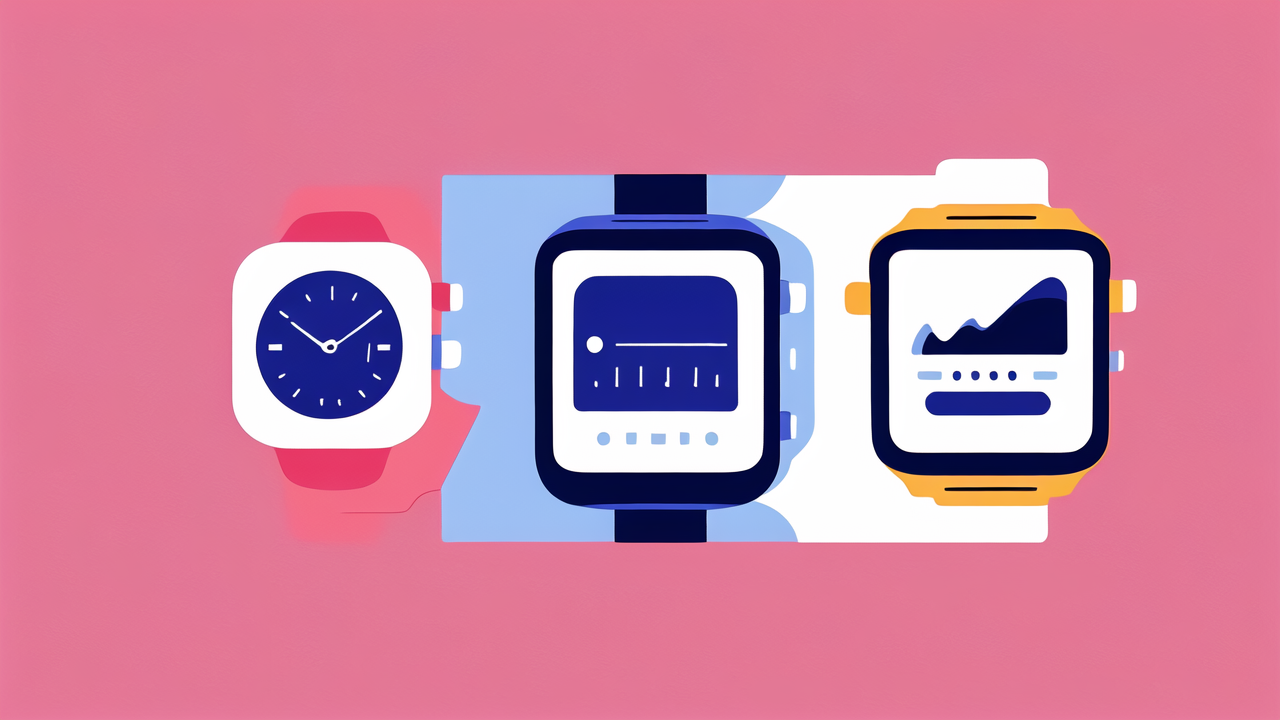Understanding Pulse Watches
What Are Pulse Watches?
Pulse watches, a subset of smartwatches, are designed to monitor and display your heart rate in real time. These devices use sensors to detect blood flow changes beneath your skin, interpret these changes as pulse beats, and present the information on their screen. Perfect for fitness enthusiasts, health-conscious individuals, or those monitoring specific health conditions, pulse watches often come incorporated into fitness or multi-functional smartwatches. They are widely used during workouts, daily activities, or even in clinical settings to provide a quick reading of the wearer's current heart health status.

The Technology Behind Pulse Watches
Pulse watches integrate advanced technology to monitor your heart rate. At their core, they use photoplethysmography (PPG), which employs light-based technology to sense the volume of blood flow. Here's a simplified breakdown of the process:
- Light Emission: The device emits a green light that penetrates the skin.
- Blood Flow Detection: When the blood pulses, it absorbs more light. Between pulses, less light is absorbed.
- Data Capture: A sensor detects the alternating levels of light absorption and calculates the blood volume changes.
- Heart Rate Calculation: The watch's processor analyzes the pattern of blood flow and calculates the pulse rate.
Some pulse watches also have electrocardiogram (ECG) sensors to provide more detailed heart rate data. This technology creates a graph of the electrical activity of the heart which can offer insights into the heart’s rhythm and identify irregularities.
Key Factors in Choosing a Pulse Watch
Design and Comfort
When selecting a pulse watch, the design and comfort are paramount. A sleek, ergonomic design not only looks appealing but also fits comfortably on your wrist, crucial for long-term wear. An ideal pulse watch should have a strap that adjusts easily and doesn't irritate the skin. The watch should be light enough to avoid feeling cumbersome during daily activities or exercise. Additionally, consider the ease of navigating the watch's interface; a user-friendly design can enhance your overall experience. Look for watches with customizable faces and straps, as they offer personalization to suit your style and comfort preferences. Ensure that the design does not impede the watch's primary function of pulse measurement. Remember, a watch that feels good on your wrist and aligns with your personal aesthetic will be one you're more likely to wear consistently, ensuring you get the most out of its health-tracking features.
Accuracy of Pulse Measurement
One of the most critical aspects to look for when selecting a pulse watch is the accuracy of the pulse measurement. This is because the primary function of a pulse watch is to monitor your heart rate. An accurate pulse watch can help you maintain the correct intensity during workouts, track your fitness progress, and could be vital in detecting potential health issues. To gauge the accuracy, check if the watch uses optical heart rate technology, which employs light to measure blood flow through your skin. Also, look for validated studies or user reviews that confirm the watch's precision. Some watches also offer additional sensors, like electrocardiogram (EKG) capabilities, which can provide more precise readings. When comparing watches, consider devices that frequently update their heart rate data, preferably in real-time, to ensure the most accurate readings. Additionally, make sure the device has a good fit on your wrist as a loose fit can lead to inaccurate measurements.
Battery Life and Charging Options
When selecting a pulse watch, battery life and charging options are crucial components to consider. A watch with long-lasting battery life ensures that you can monitor your pulse continuously without frequent recharges, which is especially important for those who lead active or busy lifestyles. Most lifestyle and fitness-oriented watches now offer battery lives ranging from 24 hours to multiple days on a single charge. Additionally, look for watches with quick charging capabilities or wireless charging options for added convenience. For instance, some modern pulse watches can regain significant battery life with just a quick 15-minute charge, ensuring minimal downtime and disruption to your daily routine.
Top Pulse Watch Models on the Market
Comparison of the Latest Apple Watch and Samsung Galaxy Watch
When looking at the top contenders in the pulse watch market, the latest Apple Watch and Samsung Galaxy Watch models often come to mind. These two giants in wearable technology have been competing for user's wrists with their advanced features and innovative designs. The Apple Watch is known for its seamless integration with the iOS ecosystem, offering features such as ECG and fall detection, while the Samsung Galaxy Watch boasts its long battery life and comprehensive health tracking capabilities. Both brands offer a variety of models catering to different budgets and preferences, with the option to personalize watch faces and straps.
To directly compare, the Apple Watch tends to have a more streamlined user interface and is preferred by users who are already comfortable with Apple products. On the other hand, the Samsung Galaxy Watch often stands out for its compatibility with both Android and iOS devices, making it a versatile choice for a broader audience. However, both watches offer key wellness features like heart rate monitoring, sleep tracking, and fitness coaching, making the decision between the two a matter of personal preference and specific needs. It's also important to consider the compatibility with your smartphone and other devices, as this can significantly enhance the functionality of your pulse watch.
Other Notable Brands and Models
Besides the tech giants, Apple and Samsung, there are other brands that have made a name for themselves in the pulse watch market. Fitbit is known for its focus on health and fitness, offering robust tracking features with a comfortable design. Garmin stands out with its advanced GPS functionality, making it a favorite among outdoor enthusiasts. Withings brings a touch of elegance, combining classic watch aesthetics with modern health monitoring capabilities. Polar and Suunto are also key players, providing reliable performance and durability, catering to the needs of serious athletes and adventure seekers. Each of these brands has models that cater to different preferences, budgets, and feature requirements, ensuring consumers have a variety of options beyond the most popular Apple Watch and Samsung Galaxy Watch.
Additional Features to Consider
Smart Notifications
Smart notifications are a crucial feature to consider when choosing a pulse watch. These notifications can alert you to incoming calls, messages, calendar events, and even app-specific alerts directly on your watch. This feature is especially beneficial for those who need to stay connected without constantly checking their phone. When comparing different models, look for customization options that let you tailor which notifications you receive and how they appear. This allows you to manage interruptions and maintain focus, whether you're in a meeting or on a run.
Fitness Tracking Capabilities
When looking at pulse watches, their ability to track fitness metrics is a game-changer. These watches not only measure your heart rate but can record steps, distance, and calories burned. Many also offer specialized modes for different activities like running, cycling, or swimming, capturing detailed data specific to the workout. This function is essential for anyone aiming to monitor their fitness progress. Essential features include pedometer, workout logs, and sometimes even GPS for precise distance tracking. So when considering a pulse watch, check for a comprehensive set of fitness tracking options to ensure it aligns with your health and exercise goals.
Water Resistance and Durability
When choosing a pulse watch, water resistance and durability are important features to consider. Pulse watches come with different levels of water resistance, typically measured in meters or atmospheres (ATM). Look for a watch with at least 3 ATM, which can withstand splashes and brief immersion in water. For swimmers or those exposed to water frequently, a higher rating like 5 ATM or more is advisable.
Durability is also key, especially for those with active lifestyles. A sturdy build, scratch-resistant screen, and robust materials like stainless steel or reinforced plastic ensure your pulse watch can handle daily wear and tear. Some watches feature Gorilla Glass or sapphire crystal screens for added protection. Check for these qualities to ensure you have a pulse watch that lasts and stands up to the elements you encounter.
How to Use a Pulse Watch Effectively
Setting Up Your Pulse Watch
To ensure you get the most out of your new pulse watch, proper setup is essential. Begin by charging the device until it reaches full battery. Next, install any associated apps on your smartphone, as these applications often provide additional features and allow for data synchronization. Follow the on-screen instructions to pair your watch with your phone via Bluetooth. Customize the settings to match your preferences, particularly for items like display brightness and alerts. Also, enter your personal health information, such as weight and age, for more accurate pulse measurements. Make sure to check for any firmware updates and install them, as they can improve performance and add new features. Lastly, secure the watch comfortably on your wrist, ensuring it’s not too tight or too loose, which could affect the pulse sensor's accuracy.
Tips for Accurate Pulse Reading
To achieve accurate pulse readings from your pulse watch, follow these practical tips:
- Ensure Proper Fit: The watch should fit snugly but comfortably around your wrist, not too tight or too loose.
- Wear It On Your Non-dominant Arm: This can reduce noise in the data caused by excessive movement.
- Keep It Clean: Dirt or sweat on the sensors can affect readings, so regularly clean both the watch and your wrist.
- Warm-Up Your Body: Before taking a measurement, warm up for a few minutes. This stabilizes your body's circulation and provides more consistent readings.
- Remain Still and Relaxed While Measuring: Try to stay as calm and still as possible during measurement to avoid disrupting the sensor.
- Regular Calibration: If your watch offers calibration options, use them. This helps the watch adjust to your specific heart rate patterns.
By adhering to these guidelines, you can significantly enhance the accuracy of your pulse readings, ensuring more reliable health tracking.
Maintaining Your Pulse Watch
Regular Updates and Care Tips
To ensure your pulse watch operates at peak performance, regular updates and maintenance are crucial. Here's how to keep your device in top shape:
- Software Updates: Manufacturers frequently release updates to enhance functionality and patch security vulnerabilities. Always install the latest software updates as soon as they are available.
- Cleaning Your Watch: Sweat and dirt can accumulate on your watch, especially after exercise. Use a soft, lint-free cloth to gently wipe the band and the watch face.
- Avoid Extreme Temperatures: Exposing your pulse watch to very hot or cold environments can affect its performance. Try to keep it within recommended temperature ranges.
- Handle With Care: Even if your watch is labeled as shock-resistant, it's best to avoid dropping it or hitting it against hard surfaces.
- Regular Charging: To prevent battery issues, charge your watch regularly instead of letting the battery completely drain.
By following these care tips, you can help extend the life of your pulse watch and maintain its functionality.
Troubleshooting Common Issues
Troubleshooting common issues in pulse watches is critical for ensuring their longevity and functionality. If your pulse watch fails to record data accurately, try restarting the device or check for any firmware updates. A misaligned or dirty sensor can also lead to inaccurate readings, so make sure to clean the sensor area gently with a lint-free cloth. For connectivity problems with your smartphone, ensure Bluetooth is active on both devices and try re-pairing them. Lastly, if battery life diminishes quickly, consider reducing screen brightness and turning off unnecessary notifications. Each issue typically has a fix outlined in the user manual, so keeping it accessible for quick reference is advisable.
The Future of Pulse Watches
Innovations in Wearable Technology
The future of pulse watches is brimming with technological advancements. Innovations in wearable technology are expected to enhance their usability and health tracking accuracy. We may soon see features like more advanced sensors for real-time health monitoring, including blood pressure and glucose levels. Additionally, integration with AI could personalize health recommendations based on data collected over time. These features aim not only to monitor health but also to prevent potential illnesses by alerting users to health risks sooner.
Predictions for Upcoming Models and Features
As we look to the future of pulse watches, several exciting advancements are anticipated. Next-generation models are expected to feature even more precise sensors for enhanced pulse tracking, integrated with AI capabilities for personalized health insights. Furthermore, enhanced battery technology may allow for longer usage times without frequent recharges. Design-wise, future pulse watches are likely to become even more sleek and lightweight, appealing to a broader audience. Moreover, compatibility with a wider range of devices and operating systems could further increase their usability and popularity. These innovations signify a promising direction in wearable technology, aiming to blend functionality with user convenience and greater health monitoring accuracy.




Leave a comment
This site is protected by hCaptcha and the hCaptcha Privacy Policy and Terms of Service apply.